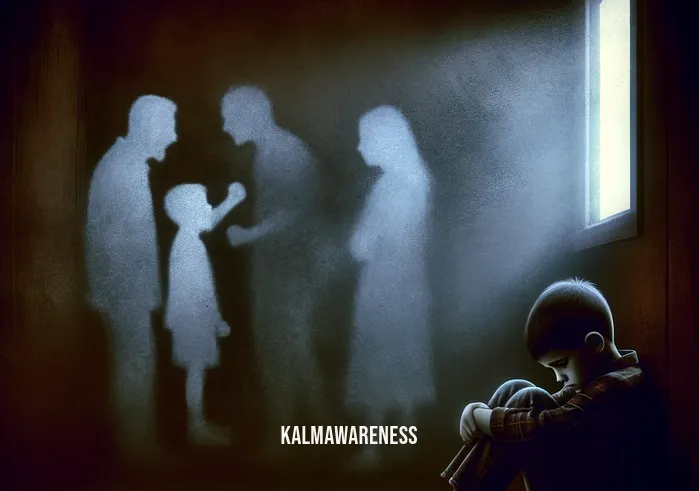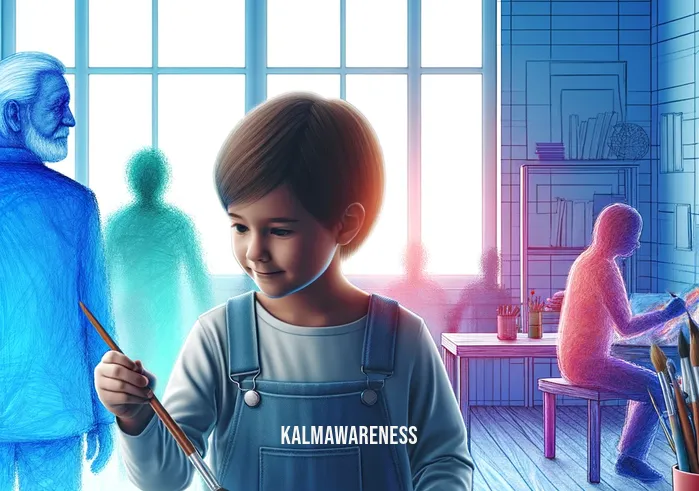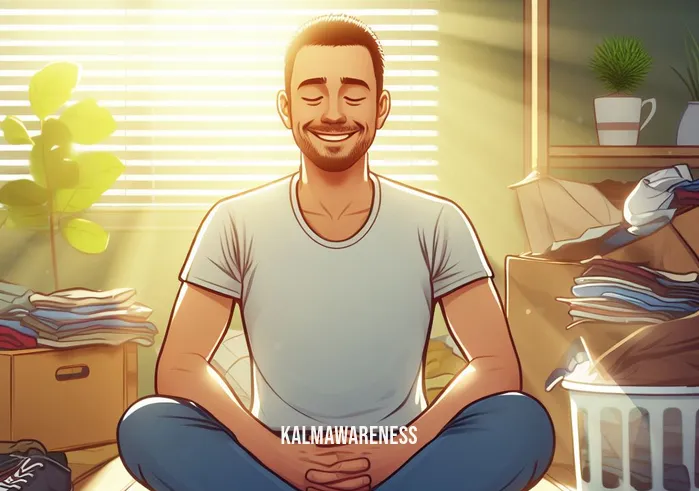Wounded Inner Child Art: A Healing Journey
Wounded inner child art is a transformative approach that allows individuals to reconnect with and heal their inner child—the often suppressed, hurt, or neglected part of themselves that still holds pain from childhood experiences. As adults, many of us carry the scars of our past, manifesting as anxiety, depression, or even physical ailments. This art form, grounded in the principles of holistic health and well-being, offers a therapeutic outlet to address and heal these emotional wounds. In this segment, we’ll dive into the origins and benefits of wounded inner child art and explore the myriad ways it intersects with other healing practices.
What is the Wounded Inner Child?
The term “inner child” refers to an individual’s original or true self—the version of themselves that exists before societal conditioning, traumas, or other formative experiences have shaped their identity. The inner child embodies our joy, curiosity, and innate sense of wonder. However, when this inner child is wounded—whether through neglect, abuse, or other traumatic experiences—it can lead to a range of emotional and psychological challenges in adulthood.
The Intersection of Art and Healing
Art has long been recognized as a powerful medium for self-expression and healing. Wounded inner child art, in particular, leverages this potential, offering individuals a way to visually depict, process, and ultimately heal their inner wounds. Engaging in this form of art is both a journey of self-discovery and a therapeutic exercise. It connects us to mindful movement sleep, where we are guided to release pent-up emotions and energies in a constructive manner.
But why art? Art, in its essence, is a non-verbal form of communication. It transcends the boundaries of language, allowing one to express feelings and experiences that might be too challenging or painful to articulate with words. By tapping into this medium, wounded inner child art becomes an element of some meditation exercises, allowing us to introspect deeply and come to terms with our past.
Complementary Therapeutic Techniques
While wounded inner child art is potent on its own, it often intersects with other healing practices to offer a comprehensive therapeutic experience. One such method is EMDR meditation. EMDR, or Eye Movement Desensitization and Reprocessing, is a technique that helps individuals process traumatic memories, making it a fitting complement to our art-based approach.
Similarly, the art of mindful hypnobirthing is another avenue through which individuals can connect with their inner child, especially for expectant mothers. This technique combines mindfulness with the birthing process, ensuring a peaceful and positive childbirth experience.
The Role of Chakras in Healing
Our spiritual well-being is closely intertwined with our emotional and psychological health. The concept of chakras, or energy centers in our body, is central to many healing practices. The galactic chakra, for instance, connects us to the universe’s energies, helping us align our inner child’s needs with the cosmos. Similarly, tuning into the frequency for the throat chakra can empower individuals to voice their inner child’s pains, fostering communication and healing.
Towards Sustainable Well-being
Wounded inner child art is not just about healing past wounds—it’s about fostering a sense of sustainable self-care. By regularly engaging with this art form, individuals can continuously nourish their inner child, ensuring long-term emotional well-being.
In conclusion, wounded inner child art stands at the intersection of art, therapy, spirituality, and holistic well-being. By offering a space for individuals to express, reflect, and heal, it paves the way for a more fulfilling, emotionally balanced life. As we delve deeper into this topic in the next segment, we’ll explore specific techniques and practices that can enhance this healing journey. So, continue reading to embark on a transformative path to healing and self-discovery.

The Techniques and Benefits of Wounded Inner Child Art
The world of wounded inner child art is vast and diverse, offering myriad techniques that cater to different individuals and their unique healing journeys. It’s not just a form of self-expression; it’s a tool for deep introspection, self-awareness, and emotional release. This chapter delves into the techniques employed in this art form, the tangible benefits derived from them, and a comprehensive table to guide enthusiasts in their therapeutic exploration.
Techniques Employed in Wounded Inner Child Art
Visualization: Rooted in practices like how we get deep so fast, visualization involves picturing one’s inner child, the memories associated with it, and the feelings that arise. This is the first step towards acknowledging the pain and embarking on the healing process.
Narrative Art: Sometimes, stories can be a powerful medium for expression. This technique encourages individuals to craft a narrative around their wounded inner child, thereby providing a structure to the chaotic emotions.
Mandala Creation: Drawing inspiration from clearing energy meditation, creating mandalas allows one to center themselves and channel their emotions into a symmetrical, harmonious design.
Sculpting: Giving a tangible form to one’s pain, sculpting involves molding clay or other materials to represent the inner child and its associated wounds.
The Multifaceted Benefits
Emotional Catharsis: The primary benefit of this art form is the release of pent-up emotions. By channeling pain into art, individuals can process and let go of negative feelings.
Enhanced Self-awareness: Techniques like touching that body part in the art sessions enable individuals to become more attuned to their bodies and the emotions they hold.
Cognitive Shifts: Engaging in wounded inner child art often brings about a change in perspective, allowing individuals to see their past traumas in a new light and fostering forgiveness.
Skill Development: On a more practical note, regularly practicing this art form enhances one’s artistic skills, providing a dual benefit of therapy and talent cultivation.
Overview of Wounded Inner Child Art Techniques
| Technique | Associated Benefit | Recommended for… |
|---|---|---|
| Visualization | Acknowledging pain, Emotional recognition | Those beginning their healing journey |
| Narrative Art | Structuring emotions, Storytelling | Individuals who enjoy writing or stories |
| Mandala Creation | Centering, Symmetry in emotions | Those drawn to patterns and designs |
| Sculpting | Tangible representation, Physicality | Individuals who prefer tactile mediums |
Journeying Ahead
As we traverse deeper into the realm of wounded inner child art, it becomes evident how diverse and impactful this therapeutic approach truly is. It’s a blend of artistry, emotion, and healing—a trinity that promises transformation for those brave enough to embark on this journey.
In the next chapter, we’ll delve into real-life stories of individuals who have undergone profound change through wounded inner child art. Their testimonies, challenges, and triumphs offer a glimpse into the profound impact this art form can have on one’s life. So, continue reading to discover inspiring narratives that will undoubtedly resonate with many.

The Power of Hope in Wounded Inner Child Art
While the techniques and benefits of wounded inner child art offer a structured understanding, it’s the stories of transformation and hope that truly illuminate its profound impact. In this realm of therapeutic artistry, hope isn’t just an emotion—it’s a catalyst, driving individuals to confront their past, channel their pain, and ultimately, find a renewed sense of self. Through tales of resilience and quotes that echo the sentiment of healing, let’s delve into the inspirational journey of healing through art.
Stories of Resilience
Ella’s Tale: Ella, a young woman in her late twenties, discovered wounded inner child art when she was on the verge of despair. After participating in a session that revolved around the judgment of the wise, she began regularly creating art that represented her childhood traumas. Today, she not only has a collection of evocative artworks but also conducts workshops to help others like her find solace.
Jordan’s Journey: A survivor of bullying, Jordan always struggled with self-worth. It wasn’t until he immersed himself in an art retreat focusing on rousing yoga that he could truly face his inner child’s wounds. Now, Jordan’s artwork is displayed in local galleries, embodying his transformation from victim to victor.
Liam’s Leap: Having faced abandonment issues as a child, Liam’s art was always somber. However, his turning point came when he explored Galactic chakra’s healing power through wounded inner child art. His art palette brightened, mirroring his internal shift from darkness to light.
Echoes of Hope: Resonating Quotes
“Art is the journey of a free soul.” – Alev Oguz
In the context of wounded inner child art, this quote highlights how art can liberate the shackled soul, freeing it from past traumas.
“Art speaks where words are unable to explain.” – Mathiole
For many who engage in therapeutic art, this quote resonates deeply. It underscores art’s unique ability to express pain, hope, and healing, even when words fall short.
“The purpose of art is washing the dust of daily life off our souls.” – Pablo Picasso
A testament to art’s cleansing power, Picasso’s words remind us that through art, one can find clarity, hope, and a fresh perspective.
“In our life, there is a single color, as on an artist’s palette, which provides the meaning of life and art. It is the color of love.” – Marc Chagall
This quote beautifully ties in the essence of wounded inner child art – that it is an act of self-love, of nurturing the neglected, and of embracing every shade of our being.
The Road Ahead
As these stories and quotes illustrate, wounded inner child art isn’t just a therapeutic exercise—it’s a transformative journey, replete with challenges, discoveries, and moments of epiphany. The canvas becomes a testament to one’s resilience, capturing the nuances of pain, hope, and rebirth.
But the journey doesn’t end here. In the next chapter, we’ll explore the tools and resources available for enthusiasts looking to dive deeper into this world of healing artistry. From workshops to dedicated retreats, there’s a plethora of avenues awaiting exploration. So, continue reading and let the colors of hope paint your path forward.
@
Tools and Techniques in Wounded Inner Child Art
The beauty of wounded inner child art lies not only in its healing power but also in the diverse range of tools and techniques available for exploration. As we delve deeper into this therapeutic artistry, it’s essential to understand the core components that form its foundation. Using structured lists and bullet points, we’ll embark on an enlightening journey to decipher the intricacies of wounded inner child art.
Key Concepts in Wounded Inner Child Art
- Therapeutic Release: Leveraging art to process and release emotional pain.
- Childhood Reflection: Revisiting and understanding childhood memories and experiences.
- Healing Imagery: Creating images that resonate with healing, growth, and transformation.
- Emotional Mapping: Using colors, symbols, and patterns to map emotions on canvas.
- Intuitive Creation: Allowing the unconscious mind to guide the art-making process.
Techniques to Explore
- Mindful Movement Sleep: Drawing inspiration from mindful movement sleep, one can use fluid motions to create art that’s both calming and therapeutic.
- Meditative EMDR: Integrating EMDR meditation techniques, artists can process traumatic memories and depict them in a transformative light.
- Sensory Touch Exploration: Inspired by the idea of touching specific body parts, artists can focus on creating art based on sensory memories from childhood.
- Walking Meditations: Drawing parallels with teenagers walking as a form of meditation, this technique involves creating art post a meditative walk, channeling the serenity and insights gathered.
Tools for Inner Child Healing
- Meditative Journals: Encourage reflection and tracking of emotional growth.
- Elemental Meditation: Incorporating the element of some meditation exercises, such as fire or water, into the artwork.
- Chakra-based Artistry: Aligning the art process with specific chakra frequencies, such as the frequency for the throat chakra.
- Sonic Brushes: These are brushes that resonate with specific frequencies, like 256 Hz, enhancing the therapeutic process.
Benefits of Embracing the Art
- Catharsis: Provides an outlet for suppressed emotions.
- Self-awareness: Offers insights into one’s emotional and mental state.
- Empowerment: Equips individuals with tools to reclaim their narrative and transform pain into power.
- Skill Development: Apart from therapeutic benefits, individuals also hone their artistic skills.
As we’ve unraveled the techniques, tools, and profound benefits of wounded inner child art, it’s evident that this form of therapy isn’t just about healing; it’s about rediscovering oneself. And as we move towards our concluding chapter, we’ll focus on how individuals, therapists, and art enthusiasts can effectively incorporate these insights into their journey, ensuring a holistic approach to healing. So, stay with us as we piece together the final elements of this transformative puzzle in the upcoming chapter.
@
The Healing Power of Wounded Inner Child Art: Reflections and Forward Paths
As we conclude our exploration into the world of wounded inner child art, it’s essential to reflect upon the transformative journey we’ve undertaken. From understanding its therapeutic essence to diving deep into its tools, techniques, and profound impact, we’ve woven together a tapestry of healing, self-discovery, and empowerment.
The Journey We Undertook
Wounded inner child art isn’t merely a therapeutic approach; it’s a mirror reflecting our most profound emotions, traumas, and memories. By revisiting touching specific body parts or resonating with the frequency for the throat chakra, this art form enables us to reconnect with our true selves. It offers an opportunity to heal those deep-seated wounds, transforming them into powerful narratives of resilience and growth.
Real-world Applications
Beyond the canvas, the insights gleaned from wounded inner child art can be integrated into our daily lives. From practicing mindful hypnobirthing techniques to meditating using the galactic chakra, these art-centric tools empower individuals to stabilize emotions, build resilience, and attain a peaceful state of mind.
Embracing The Art in Everyday Life
- Mindfulness: Incorporate the element of meditation exercises into daily routines.
- Sonic Soundscapes: Listen to frequencies like 256 Hz to harmonize emotions.
- Guided Practices: Explore Jack Kornfield’s meditation for beginners to ground oneself.
- Reading and Reflection: Dive deeper into concepts like sustainable self-care to cultivate a holistic well-being approach.
Embrace, Engage, and Explore Further
As we wrap up, here’s an invitation for all our readers: delve deeper. Explore our other content, be it articles on how we get deep so fast or understanding the nuances of clearing energy meditation. Let every piece guide you, inspire you, and offer insights to navigate life’s challenges.
To our cherished readers, thank you for embarking on this journey with us. Your engagement, your curiosity, and your pursuit of healing have made this exploration truly meaningful. As we continue to delve into topics of health, well-being, and personal growth in future editions, rest assured, our commitment remains unwavering: to empower, enlighten, and uplift.
So, until next time, embrace the art, engage with your inner child, and always keep exploring!



